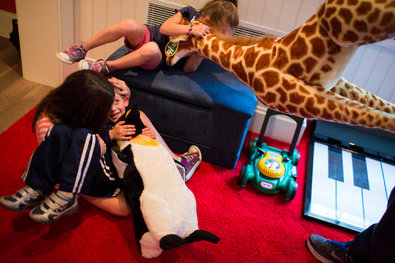The oil services company said it would pay the maximum allowable fine of $200,000 and will be subject to three years of probation. It will also continue its cooperation in the government’s criminal investigation. Separately, Halliburton made a voluntary contribution of $55 million to the National Fish and Wildlife Foundation.
The Justice Department filed one criminal charge against the company. In a statement, Halliburton said that the violation was a misdemeanor associated with the deletion of records created after the accident. Additionally, the company said, “The Department of Justice has agreed that it will not pursue further criminal prosecution of the company.”
Halliburton has suffered enormous damage to its reputation — as have BP and Transocean, the operator of the Deepwater Horizon rig — in the explosion that killed 11 workers and soiled hundreds of miles of beaches. All three companies have pleaded guilty to a criminal charge related to the spill.
The development was not entirely unexpected after the first phase of the civil trial in New Orleans. Lawyers representing businesses and others that suffered from the spill had long accused the company of conducting undocumented cement tests and hiding the results. BP had accused Halliburton of destroying evidence of its cement testing.
But during the trial this year Thomas Roth, a senior company executive who was in charge of cementing operations when the spill occurred, acknowledged that because of the well design and other factors, “the cement placement was going to be a job that would have a low probability of success.”
Timothy Quirk, a Halliburton laboratory manager, testified that he conducted stability tests on cement samples from a similar blend that had been used in the well after the accident. Following instructions from a colleague, he said he did not prepare a laboratory work sheet. “It was unusual,” he said. He also acknowledged that he had thrown out his notes.
Later tests showed that the cement was not stable.
The failure of the cement foam seal set off a complex and ultimately deadly cascade of oil and gas up the well casing that exploded into flames to engulf the Deepwater Horizon rig. The blowout preventer, which is supposed to contain a well bore breach, also failed.
The presidential commission that investigated the accident reported that Halliburton officials knew before the explosion that the cement mixture they planned to use to seal the bottom of the well was unstable but still went ahead with the cementing.
The commission also found that at least one of three laboratory tests was given to BP, the operator of the drilling site, but it neglected to respond.
“There is no indication that Halliburton highlighted to BP the significance of the foam stability data or that BP personnel raised any questions about it,” the report said.
Legal scholars said the guilty plea would probably work against Halliburton in the civil trial in New Orleans to determine the share of damages owed to the Gulf states and businesses affected by the spill.
“This could impact how the civil litigation is resolved, potentially imposing more liability on Halliburton than we originally thought,” said Carl Tobias, a law professor at the University of Richmond.
It may also work in favor of BP, which has argued that while it made serious mistakes it shares responsibility for the accident with Halliburton and Transocean.
Last November, BP agreed to pay $4.5 billion in penalties and pleaded guilty to 14 criminal charges related to the explosion.
The Justice Department also has filed criminal charges against four BP employees in connection with the accident. Transocean agreed to plead guilty this year. The company was sentenced to pay $400 million and other penalties.
In recent years, the giant energy services company has had remarkable success as a leader in the oil and gas shale drilling revolution that is making the United States less dependent on foreign energy supplies.
But in the not-to-distant past, Halliburton found itself under scrutiny over accusations that it performed shoddy, overpriced work for the United States military in Iraq, bribed Nigerian officials to win energy contracts and did business with Iran at time when it faced sanctions.
“It’s another bad day for Halliburton and a very good day for BP,” said Fadel Gheit, a senior oil analyst at Oppenheimer.

Article source: http://www.nytimes.com/2013/07/26/business/halliburton-pleads-guilty-to-destroying-evidence-after-gulf-spill.html?partner=rss&emc=rss

